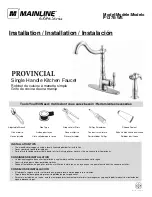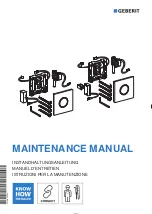
1.800.732.0144
SPORTDOG.COM
12
13
GE
TTI
NG
S
TA
RTE
D
GE
TTI
NG
S
TA
RTE
D
ABOUT RECHARGEABLE BATTERIES
• The Handheld Device and GPS Collar contain Lithium-ion (Li-ion) batteries; never incinerate, puncture,
deform, short-circuit, or charge with an inappropriate charger. Fire, explosion, property damage,
or bodily harm may occur if this warning is not followed.
• Risk of explosion if battery is replaced by an incorrect type. Dispose of used batteries according to the
regulations in your area.
• Do not short circuit, mix old and new batteries, dispose of in fire or expose to water. When batteries are
stored or disposed, they must be protected from shorting.
• The battery should be charged in areas with temperatures ranging from 32°F to 113°F / 0°C to 45°C.
Recharging the battery outside of this temperature range can cause the battery to overheat, explode,
or catch fire.
• Batteries should never be removed from the battery compartment for charging.
• Keep batteries away from children.
• The rechargeable Lithium ion (Li-ion) batteries are not memory sensitive, do not require depletion before
charging, and cannot be over charged.
• The batteries come partially charged from the factory, but will require a full charge before the first use.
• When storing the unit for long periods, remember to regularly give batteries a full charge. This should be
done once every 3 to 4 months. Failure to do so will result in decreased battery life.
• You should expect hundreds of recharge cycles from your batteries. However, all rechargeable batteries
lose capacity over time relative to the number of recharge cycles they experience. This is normal. If your
operating time drops to half of the original life, contact the Customer Care Center.
• The batteries should last for a period of 3 to 5 years. When a battery needs replacement, call our Customer Care
Center. Please do not open the Handheld Device or GPS Collar until you have received your replacement.
• When storing the device for an extended time, store within the temperature range of 32°F to 77°F
(from 0° to 25°C).
CONVERT A GPS COLLAR TO A GPS E-COLLAR MODULE
1. Remove the 2 outer screws from the Location-Only
Module with a 3/32 Hex Key
(A).
2. Separate the Location-Only Module from the GPS
Collar’s front housing
(B).
3. Thoroughly clean inside the front housing with a
soft towel, removing any debris.
4. Before installing the E-Collar Module, check to
make sure the GPS Collar mount, antenna base, and
antenna cable have not become dislodged
(C).
• Ensure the GPS Collar mount is seated properly in
the front housing and that the GPS Collar mount
plug is securely in place.
• Ensure the antenna base is seated firmly on top of
the GPS Collar mount and that the antenna cable is
routed properly through front housing channel.
5. Install the E-Collar Module onto the GPS Collar’s
front housing. Ensure that the E-Collar Module is
fully seated before replacing the screws
(D).
6. Replace the 2 outer screws being careful not to over-tighten
(E).
NOTE: If you own the TEK Series 1.5 GPS Tracking System (TEK-V1.5L), you must purchase the TEK Series E-Collar
Module accessory to utilize E-Collar functionality (see back cover).
A
D
B
E
C
Antenna base
Antenna cable
GPS Collar mount
GPS Collar mount plug
FIT THE GPS COLLAR OR GPS E-COLLAR MODULE
To ensure the effectiveness of this product and the comfort and safety of your dog, check the fit of the collar
frequently. If you notice that your dog is experiencing skin irritation, discontinue use of the collar for a few days.
If the condition persists beyond 48 hours, see your veterinarian.
IMPORTANT: The proper fit and placement of the collar is important for effective use.
Please see page 3 for Important Safety Information.
To ensure a proper fit, follow these steps:
1. With your dog standing (
A), center the GPS Collar underneath
your dog’s neck (
B). If using an E-Collar Module, ensure the
Contact Points are touching the skin. If your dog has a long or
thick coat, you have 2 options to ensure consistent contact: either
trim the hair around the Contact Points, or switch to the longer
Contact Points included with your system.
• You may need to trim the hair in the area of the Contact Points. Never shave the dog’s neck; this may lead to
a rash or infection.
• You should not make the collar any tighter than is required for good contact. A collar that is too tight will
increase the risk of pressure necrosis in the contact area.
2. The collar should fit snugly, yet loose enough to allow one finger to fit between the
strap and your dog’s neck (
C).
3. Allow your dog to wear the collar for several minutes, and then recheck the fit.
Check the fit again as your dog becomes more comfortable wearing the collar.
NOTE: To ensure the best reception possible, position the GPS antenna on the back of
your dog’s neck.
A
B
C







































